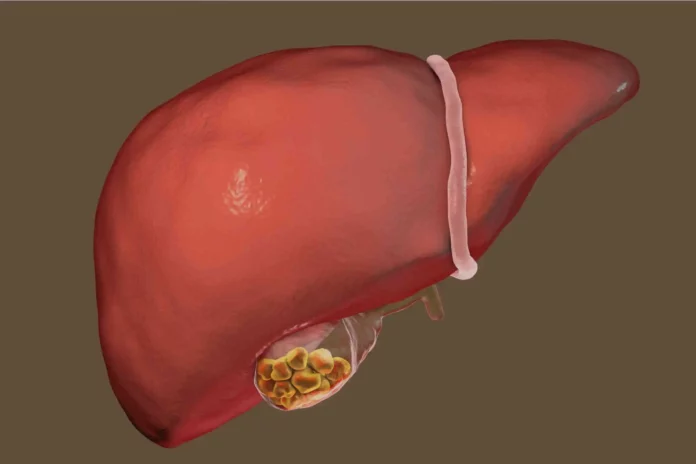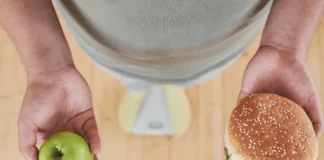Why doesn’t anyone ever talk about the gallbladder unless they’ve undergone surgery or know someone who has? What are its functions? How do we know there is a problem? Who is susceptible to gallbladder disease, and how can we prevent gallstones?
The gallbladder is under your liver. It is small and pear-shaped. It is part of our digestive system and is responsible for storing bile discharged by the liver. Bile helps break down fats, mainly made up of cholesterol, bilirubin, and bile salts.
According to The American Gastroenterological Association, “more than 25 million Americans have gallstones, and one million new cases are diagnosed every year”.
Because the gallbladder is so commonly taken for granted, it is vital, especially for our elderly population, that we know how to identify a problem that can become life-threatening.
Issues That Affect the Gallbladder
- Gallstones
Gallstones are hard little pebbles that can be as small as a grain of sand or as large as golf balls. They are made of cholesterol or bilirubin in the gallbladder or bile ducts.
Cholesterol gallstones are usually yellow and are made from undissolved cholesterol. Dark brown or black gallstones are made when you have too much bilirubin.
They are thought to be harmless but can cause pain and nausea.
- Cholecystitis
This is when a gallstone prevents bile from leaving your gallbladder. This will cause pain and fever and is severe enough to require surgery to treat.
- Gallstone Pancreatitis
This is caused when a gallstone moves down a bile duct common to the gallbladder and pancreas, creating a blockage. This diagnosis will usually improve within a week; however, severe cases present complications and can be fatal. Gallstone pancreatitis can be treated with intravenous fluids and medication. Symptoms include chills, fever, nausea, vomiting, jaundice, squeezing or sharp pain in your left upper belly, and pain that moves up to your shoulder or chest.
- Gallbladder Cancer
Though this is a rare kind of cancer, it has dismal odds of survival. There is a 30% chance of survival after one year and a 10% chance of survival for a minimum of five years.
Ultimately, all the above issues have similar symptoms: gnawing stomach pain ranging from dull to sharp, heartburn, indigestion, vomiting and nausea, fever, shaking, feeling full, chills, and tenderness in the abdomen.
What causes gallbladder disease?
There are many causes of gallbladder diseases, including pregnancy, but we won’t touch that! Our elderly citizens, however, should consider these nine causes and take preventative measures in their diets.
- Obesity
Obesity is the number one cause of gallstones, particularly for women. If you are overweight, you may have more cholesterol in your bile, causing gallstones.
Also, if you follow a high-cholesterol diet, this too will likely cause gallstones.
- Age greater than 60
If you’re over 60, gallstones are more likely to occur. The idea is that older folk have had more time for additional bile products to amass. In addition, if there is a family history of gallbladder disease, consider how much fat you have in your diet.
- Gender and Medications
Certain medications and hormones like estrogen, whether used as a contraceptive or as hormone replacement therapy after menopause, can cause gallstones if used for an extended period. Ladies, check with your doctors!
- Crohn’s Disease
Crohn’s Disease or inflammatory bowel disorder (IBD) sufferers will experience a decrease in bile salt absorption, putting your at a higher risk for gallstones.
- Diabetes
If you are diabetic, you are twice as likely as others to have gallstones. This is due to higher levels of fatty acids in your body.
- Genetics
If you have a family history of gallbladder disease, then you have a 25% chance of having gallbladder disease.
- Intravenous Feeding
Those who must be fed via a tube due to medical reasons are at higher risk of gallbladder disease due to the accumulation of bile because the digestive system is not as active as it would be if you were feeding orally.
- Fast Weight Loss
Weight loss should be done slowly. However, if you follow a low-calorie diet or have had bariatric surgery, you have a 30 to 70 percent chance of developing gallstones, the number one culprit of gallbladder disease.
Slow and steady wins the race if you’re on a diet!
- Gallbladder Polyps
Five percent of the adult population may become affected by gallbladder polyps. Gallbladder polyps can block gallbladder ducts and be confused with gallbladder cancer. If you are diagnosed with gallbladder cancer, get a second opinion as soon as you can.
Though gallbladder cancer is rare, it can and will spread quickly if not caught and addressed early.
Tips for Preventing Gallbladder Disease
Avoid an unhealthy lifestyle. Follow a balanced diet. Additional tips follow.
- Foods that are high in saturated fats should be avoided. Foods such as:
- Meat pies
- Fatty meats and sausages
- Butter
- Hard cheeses
- Food containing coconut or palm oil
- Start eating nuts such as peanuts and cashews regularly.
- Eat lots of fruits and vegetables daily.
- A small amount of alcohol (no more than fourteen units a week) will help reduce the occurrence of gallstones.
As a final note, do not skip annual checkups. This is where issues you may need to be made aware of will be uncovered.
Here’s to our elderly family members’ health!


